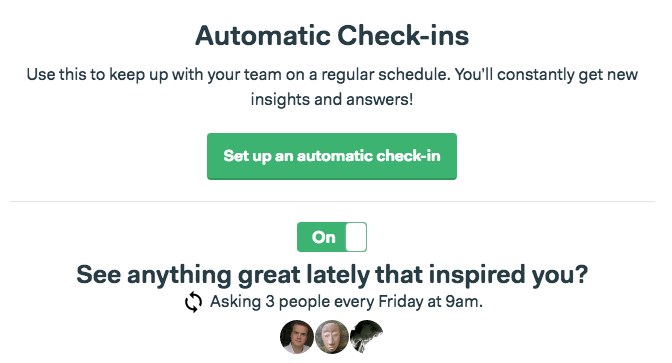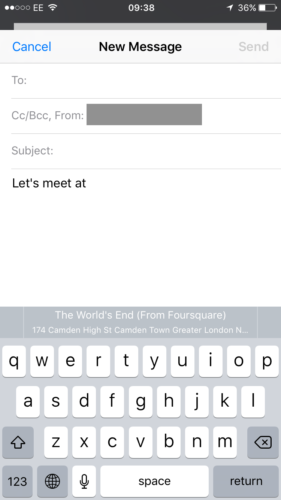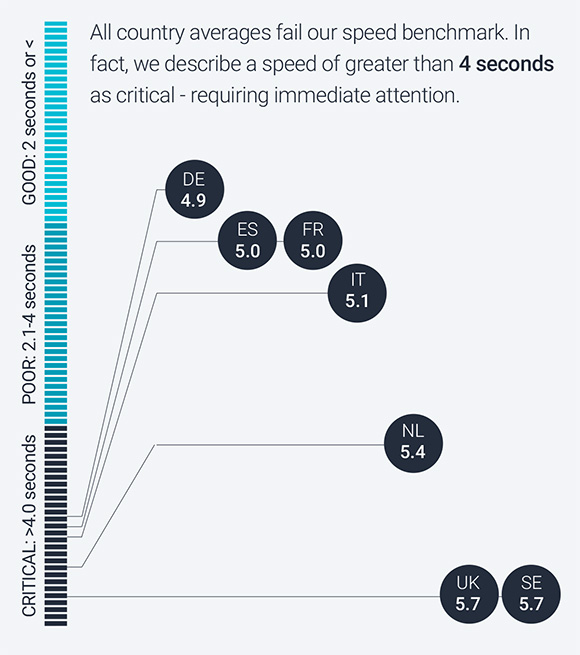
4 UX inspirations and our process for discovering them
What do ZTE, fabric, network performance and Apple’s 3rd party software integrations have in common?
These are just a few of the subjects we’ve been exploring as part of an internal MEX project called ‘Friday inspirations’, initiated by Alex Guest in May 2016.
The project developed from our move to Basecamp for collaboration between MEX team members. Basecamp 3 includes a feature called ‘Check-ins’: recurring questions sent out automatically at a particular time. In this case, it was as simple as pinging us every Friday at 9am with: ‘See anything great lately that inspired you?’.
ZTE, for example, was cited for its CSX competition, which challenged users to design a concept smartphone. The Chinese manufacturer promised it would then put the winning entry into production. Not only did it show what happens when a product company takes user co-creation to an extreme, it also highlighted how hard ZTE is trying to overcome its ‘outsider’ status in new markets such as the United States by connecting with users.
In my ‘Friday inspirations’ entry for 21st October 2016, I highlighted the main product features of the winning design (handsfree scrolling, a split-screen display for privacy and a self-adhesive mounting system) and observed:
“It confirms the old adage that, when asked to innovate directly, customers are limited to telling you about what they know. Everything in this phone has been done before. Samsung had eye tracking UIs several years ago, car dashboards have already implemented split screens and the self-adhesive backs can be bought as accessories for most major devices.”
I was inspired by several things and found it prompted other observations:
- Firstly, bravo ZTE for the way in which it has tried to embrace its customer community as a way of making ground in a new market like the US, where it faces various brand challenges (not least, national security concerns!). Allegedly they’re going to actually make this and announce it at CES in January 2017 – I wonder how much of the original design will survive?
- I think it speaks to a deeper sentiment for customer inclusion in the design process. We’re seeing this manifest in the rise of Kickstarter platforms and modular smartphones like the Moto Z and LG G5. However, no one has got it quite right…yet…I wonder which model of personalisation will emerge to dominate?
Alex’s entry for 4th November resulted from a direct experience with iOS 10. While proposing a meeting location, he noticed how Apple’s improved integration between 3rd party and system applications is adding little moments of delight and convenience to the overall user experience:
After browsing Foursquare for a place to meet, typing ‘meet at’ in an email brought up the most recent suggestion from the 3rd party app in a panel above the keyboard. Tapping it populated the email with the location and address, saving me the bother of manually copying the details.
This played into an ongoing discussion about the disappearing barriers between apps, where the frameworks of iOS and Android now surface functionality from one service within the wrapper of another.
This led to a digression. If little moments like these can be a source of such delight for users, how do you communicate their value in an age when the major product launches of new iOS and Android versions focus instead on ‘big win’, headline features?
I observed:
“…the formulaic launches of new technology products have become so unsuited to communicating the subtler virtues which actually make a good user experience. The classic routine of man on stage, big screen, bullet point announcements and lots of cheering just isn’t setup to communicate something like this little moment of delight, yet it is arguably these things which make the real difference to users’ lives.”
It is in these meandering, relaxed conversations that the course of major new MEX streams first emerge.
Here, for instance, we may have the beginning of new theme about liminal, transitory moments in digital user experience. Much has already been said about how user experience is increasingly formed in the gaps between service touchpoints, but a formal MEX programme, spanning podcast discussions, conference sessions and publishing might help clarify the opportunity and techniques to improve the state of the art. Without these simple ‘Friday inspirations’, we might not have found the beginning of this thread.
Others have encouraged us to peer further into the future. One of Patrizia Bertini’s ‘inspirations’ back in August identified a Japanese company working on ‘drawable’ circuits.
Patricia’s interest in prototyping methods and Lego (she is a qualified Lego Serious Play facilitator) caused her to consider how a free form tool like this could influence the digital prototyping process:
Patrizia posted:
“Imagine the combination of small electronic bits, Lego and all the prototyping tools we can have to test ideas and concepts…”
There are some interesting implications to the notion of flexible and drawable circuits. Google, for instance, is exploring this through ‘Project Jacquard‘, which promises conductive textiles of a quality suitable for mainstream fashion. However, it comes with both product and strategy challenges. My comment at the time was:
“What interests me about these kind of projects is how/if they become mainstream. For instance, with Jacquard, Google has concentrated on making it compatible with the existing industrial looms used in textiles, presumably because those represent the big barrier to entry. I wonder what it will take for something like drawable circuits to widen out people’s interest in electronics?”
Another benefit of ‘Friday inspirations’ is the space it provides to highlight interesting developments among members of the MEX community. For instance, cx partners – whose founder Giles Colborne spoke at MEX/16 – recently posted about a project they’ve completed for Google, looking at the link between speed and user experience. It resulted in some intriguing findings about how the majority of digital services are failing mobile speed benchmarks:
- 46% of users expect pages to load in under a second.
- In reality, some categories, like travel sites (where you’d expect performance to be especially important) benchmark at 5.7 seconds on average in the UK.
- cx considers >4 seconds to be a ‘critical’ UX issue.
In addition to being a good opportunity to update ourselves on the work of a long-term MEX community participant like cx partners, it also caused us to revisit a MEX Pathway from about 5 years ago, entitled ‘User experience techniques for an age of network austerity‘. It had coincided with 2 trends back then:
- Developed economies introducing mobile data caps after an initial period of ‘all you can eat’ deals.
- A boom in smartphones in developing countries, where mobile data remained limited to 2.5G speeds.
The premise for the pathway was exploring the direct link between network performance and user experience, manifest in a couple of ways:
- Visual design decisions (i.e. how graphically intense an app was) should be taken in the context of network expectations.
- The flow and architecture of digital services could enhance experience by reflecting the constrained reality of network performance.
As part of this pathway, Giles Colborne gave a splendid talk on illusions of speed (video) and Tom Godber also shared (video) how his ticketing platform, Masabi, focused on the detail of network performance to ensure good user experience.
The work from Google and cx partners revived this issue in our minds and reminded us many of the concerns are – frustratingly – alive and well in 2016. Dig into cx’s case study and you’ll find useful detail on specific sectors such as retail, finance and travel.
‘Friday inspirations’ continues to be a valuable practice, encouraging a discipline about taking time to consider tangents, revisit previous work and seeking the best ideas from the wider MEX community.
If you’d like to hear more examples and background from the ‘Friday inspirations’ project, have a listen to episode 19 of MEX Design Talk, where we discuss in detail.






[…] experience design. We explain the origins of the Inspirations series in this MEX podcast and article. Share your own inspirations on Twitter […]